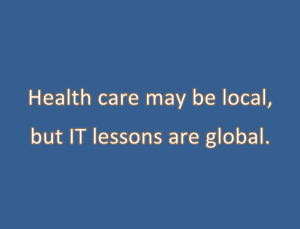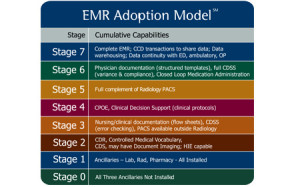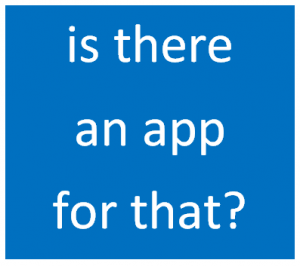I had the opportunity to talk about lessons learned from EHR implementations as part of the faculty for the “Leadership Strategies for Information Technology in Health Care” course at the Harvard School of Public Health (HSPH) last week. And yes, I was fortunate to make it in and out of Boston between snowstorms for the one day I was there.
 The course is part of Executive and Continuing Professional Education at HSPH. It is a two week course with 4 modules. The first week covers Module 1 on IT Strategy and Governance and Module 2 on the EHR.
The course is part of Executive and Continuing Professional Education at HSPH. It is a two week course with 4 modules. The first week covers Module 1 on IT Strategy and Governance and Module 2 on the EHR.
The faculty lineup for the first week is impressive. John Glaser, CEO Health Services at Siemens Healthcare and former CIO at Partners HealthCare System, lectured on “IT Strategy Considerations.” John Halamka, CIO at Beth Israel Deaconess Medical Center in Boston covered “The National Perspective and IT in the Era of Health Care Reform.” Vi Shaffer, Research Vice President and Global Industry Services Director at Gartner, provided an “Overview of the IT Industry.” Meg Aranow, Senior Research Director and Health Care IT Advisor at The Advisory Board Company, discussed analytics. New care models including telehealth, retail clinics, and accountable care organizations were also covered by various faculty members. Mary Finlay, Professor Simmons School of Management and former Deputy CIO at Partners, discussed IT Governance. Mary is the program director for the course and does a terrific job.
Students come from various roles in health care. The course has also become well known internationally at this point – with about 30% from other countries. For this session some students came from as far away as Australia and India.
I was happy to be part of the faculty and get a chance to hear a few other lectures that day as well as interact with the students over lunch. Here are some of the EHR implementation lessons I shared in my talk:
- The CIO and executive leadership in health care organizations have many priority initiatives at any given time. The EHR implementation will become a primary focus, especially as it gets closer to the go live date. As the CIO, you need to know where and when to be deeply involved vs. maintaining an overall awareness of the project’s progress, being ready to address issues as they are escalated.
- Engaged executive sponsors are needed throughout the life of the project. If the CIO is the only one worrying about the project, there’s something wrong. At the same time, the CIO should avoid saying “it is not an IT project”. To be successful, it has to be a true partnership between clinicians, operations, and IT.
- An EHR implementation has a significant impact on your entire organization and all staff members. A robust change management program is critical given the multi-disciplinary effort that EHRs require.
- Many decisions get made through the life of the project. Establish early on very clear decision rights. Know which group makes what decisions and define the escalation path when issues can’t get resolved at lower levels of the project governance structure.
- Your plan should include a “Go Live Readiness Assessment” at 120, 90, 60 and 30 days prior to go live. All teams are expected to report out their progress and open issues in detail. Project leadership then creates a readiness scorecard. This allows leadership to focus on the areas that are behind schedule and address issues to ensure an on-time, successful go live.
- Contingency planning needs to be part of the overall plan. Any major system implementation needs a back-out plan if something goes wrong. But you also need to account for the operational impact. You can’t stop the flow of patients into the emergency room but do you reduce your surgical or clinic schedules? Each organization has to determine what’s right for them. And then there’s the unrelated and unanticipated crisis that you have no control over – it could be a major facility issue like a power outage, a weather incident like the snowstorms we’ve seen the past few weeks, or a mass casualty incident in your area. Be sure to include your organization’s emergency management team in your activation and contingency planning.
- At go live, it’s all hands on deck in the command center and throughout the organization. Everyone has their specific roles. Leaders need to be present. The CIO may not be running the project but maintains a very visible presence in and around the command center. It’s a 24/7 operation for the first few weeks after go live. And be sure to round – find out how things are going for front-line staff and thank them for their work.
- Once the system is up and running, you have to recognize that optimization is ongoing. Don’t minimize the requests. Listen carefully to your users. At the same time, manage expectations about how much will get done and by when. Help shape the message. Multiple communications channels are important. Structured processes for intake of requests and a formal prioritization process with agreed upon criteria are critical. While optimization for your organization and the unique workflows is needed, don’t get stuck there. Learn from others how they have leveraged the product. Reach out to your colleagues and learn from them. Many have gone before you at this point.
And when you’re ready, be sure to share your own lessons with others.
Resources
Harvard School of Public Health’s Executive and Continuing Professional Education program, “Leadership Strategies for Information Technology in Health Care”
Related posts
Three Days and Counting. . .
Values in action. . .
MiChart summer interns – a win-win!



 What better time than year end to reflect on our collective progress as an IT team. You will see a lot of “top 10” type stories in December – top trends, breakthroughs, stories, and even top predictions for the coming year. I’ll leave those to people with far more time to research and write. What I’d like to share is the progress my incredible IT team has made in partnership with our many internal customers at UMHS in 2015. These are common journeys for health care CIOs around the country.
What better time than year end to reflect on our collective progress as an IT team. You will see a lot of “top 10” type stories in December – top trends, breakthroughs, stories, and even top predictions for the coming year. I’ll leave those to people with far more time to research and write. What I’d like to share is the progress my incredible IT team has made in partnership with our many internal customers at UMHS in 2015. These are common journeys for health care CIOs around the country.  In August 2014, I posted “
In August 2014, I posted “ Given space limitations, we had 200 attendees last year and with the venue this year we were able to accommodate 400, a significant increase. With 11 health systems in Michigan on Epic, that’s a good size group from each organization.
Given space limitations, we had 200 attendees last year and with the venue this year we were able to accommodate 400, a significant increase. With 11 health systems in Michigan on Epic, that’s a good size group from each organization. many groups have weighed in, expressed their concerns, asked their questions, refined the plan or recommendation, and only then ultimately provided their support.
many groups have weighed in, expressed their concerns, asked their questions, refined the plan or recommendation, and only then ultimately provided their support.


